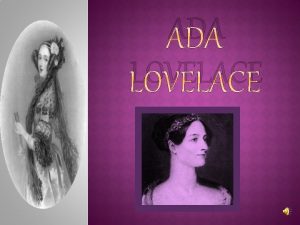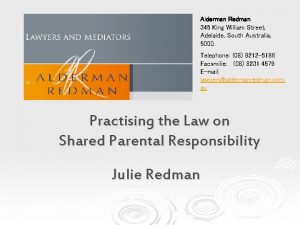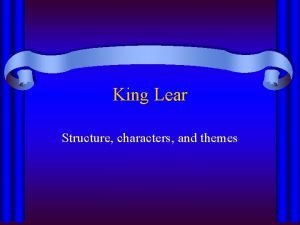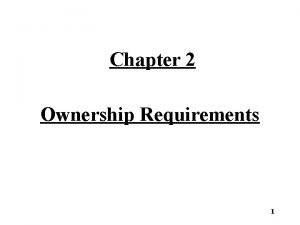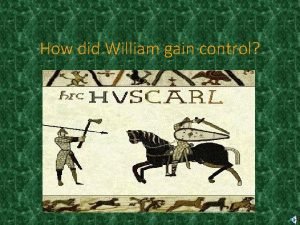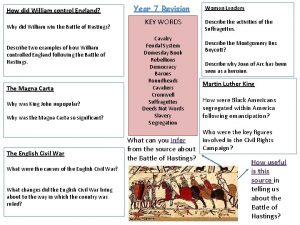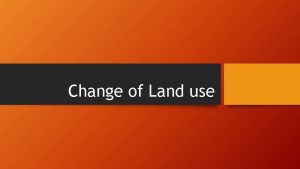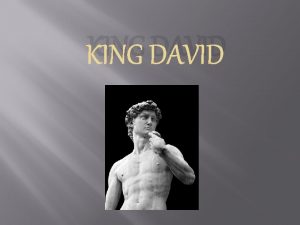How did King William change land ownership in









- Slides: 9

How did King William change land ownership in England? In this lesson, we will: • Describe how feudalism was different from the Anglo-Saxon traditions. • Assess how different knights and tenants-in-chief were to thegns and earls. Starter: Look at this image from the Bayeux Tapestry. It shows something happening in 1066 – what event was this? Why did it happen? How important a tactic is this for controlling a kingdom? Hic domus in cenditur - “Here a house is burned”

How did King William change land ownership? • All land in England was owned by King William. Everyone now had tenure from the king (renting) • If Anglo-Saxons wanted to continue to work their land, they had to pay King William. • If someone died, the land would go back to the King. Their then had to pay King William to inherit the land (called a ‘relief’) • William was very strict – if anyone disobeyed him, they would instantly lose their land.


Why was ‘Feudalism’ so beneficial for King William? • It allowed William to raise an army quickly to right in England or Normandy without having to pay for them. • Everyone owed military service in return for holding the king’s land. • The land that William gave his tenants-in-chief carried with it the obligation to provide troops. • Sub-tenants such as knights had to fight for 40 days per year unpaid in return for their land. • All of this allowed William to control his kingdom very tightly. • However, it caused resentment. Normans hated the concept of ‘reliefs’ as this was not used in Normandy.

Learning Task One

1. King had more control over everyone, as all land was his and his followers simply leased it from him (e. g. introduction of ‘tenant’) 2. It is less flexible i. e. peasants will always stay peasants, knights cannot become barons and barons cannot challenge the king. This helps William keep control of England. 3. It is more militaristic as it allows the king to raise an army quickly and for free (knights owed 40 days unpaid, barons had to raise an army in return for holding the king’s land) 4. Earls and thegns have been replaced by tenants-in-chief and subtenants. 5. All the land more controlled by the king than previously. Everyone pays tax, but people have to pay a relief to inherit land. Saxons had to pay money to continue to use their land after the conquest. 6. Slavery has been abolished, but peasants are much like slaves as they are forced to work for their masters for life.

What was a tenant-in-chief? • They were expected to fight with the king. • Lead their own band of knights, defend their own land. • Provide knights for the king. • Had to run the courts of their land, judge cases and keep the king’s peace. • Had to pay the king a share of all tax raised in their land. • Would serve on William’s witan. • Had to provide food and accommodation for William and his court when he travelled the land. • Largely replaced the Anglo-Saxon Earls.

What was a Norman knight? • Were granted land (sometimes very small) from their tenant-in-chief. This land was called a fief. • Some were very powerful and nobles wanted their sons trained as a knight from a young age. • Roughly 6, 000 of them in England. • Had to guard their lord’s property and fight for the king for 40 days. • Were superior to any other soldier e. g. could lead cavalry charges (couched lances) • Castles would be places where knights would organise attacks and defence. • Mostly replaced thegns.

Learning Task Two Green groups + orange groups Cut out and glue down your pictures of a Norman baron and Norman Knight! 1. What role did they play in Norman England? 2. How different were they from their Saxon counterparts (e. g. earl and thegn) Blue groups 1. Describe key features of both a knight and a baron




